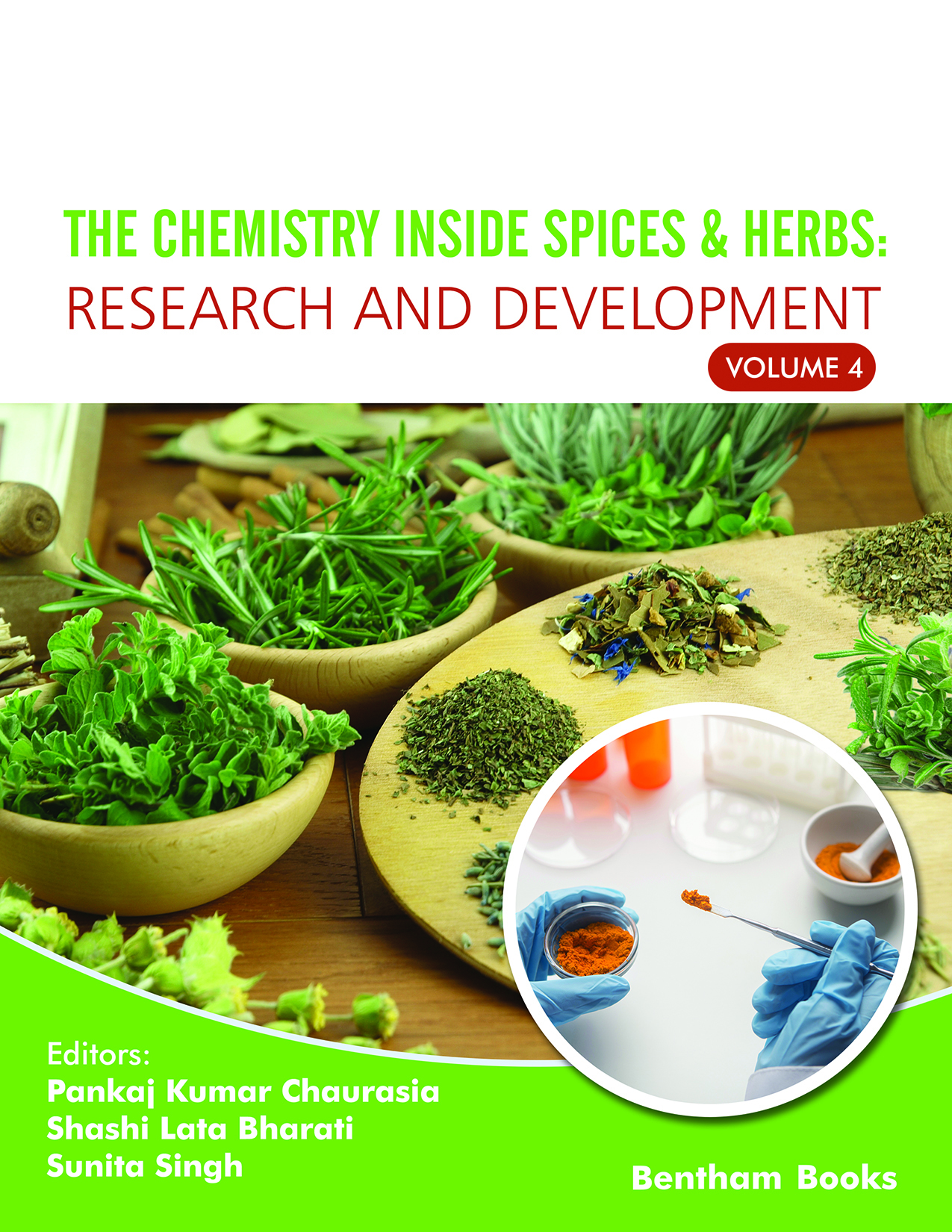Introduction
The Chemistry inside Spices & Herbs: Research and Development brings comprehensive information about the chemistry of spices and herbs with a focus on recent research in this field.
Experts in phytochemistry have contributed chapters with the aim to give the reader deep knowledge about phytochemical constituents in herbal plants and their benefits. These in-depth reviews cover the biochemistry and biotechnology of spices and herbs, herbal medicines, biologically active compounds and their role in therapeutics among other topics. Chapters which highlight natural drugs and their role in different diseases and special plants of clinical significance are also included.
Volume 4 covers these topics: the potential use of Indian spices in managing viral infections, the chemical, functional, and nutritional properties of Coriander, traditional uses, chemical components, and pharmacological properties of Sphaeranthus indicus, Copaiba oleoresins phytochemisty and the pharmacological properties of oils from Copaifera species. Additionally, the pharmacognostic profile of Nardostachys jatamansi is discussed, along with insights into the medicinal herb Bush Onion (Afrostyrax lepidophyllus) and its nutritional and medicinal values. Various aspects of plant essential oils, including their chemistry, extraction methods, and medicinal properties, and plant proteases are also covered in detail.
This book is an ideal resource for scholars (in life sciences, phytomedicine and natural product chemistry) and general readers who want to understand the importance of herbs, spices and traditional medicine in pharmaceutical R&D and clinical research.
Readership
Scholars in life sciences, phytomedicine and natural product chemistry; general readers who want to understand the importance of herbs, spices and traditional medicine, pharmaceutical R&D and clinical research.

